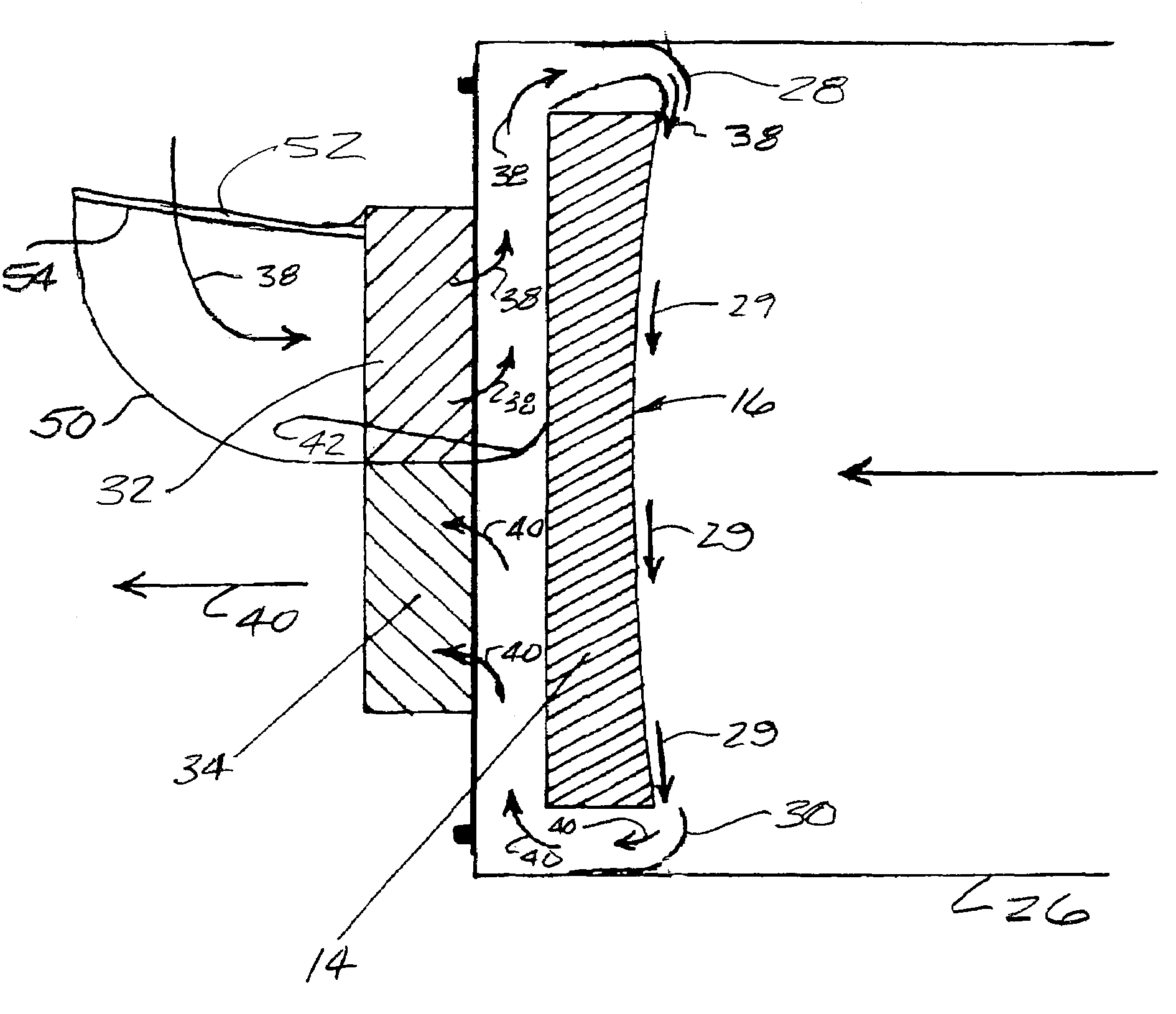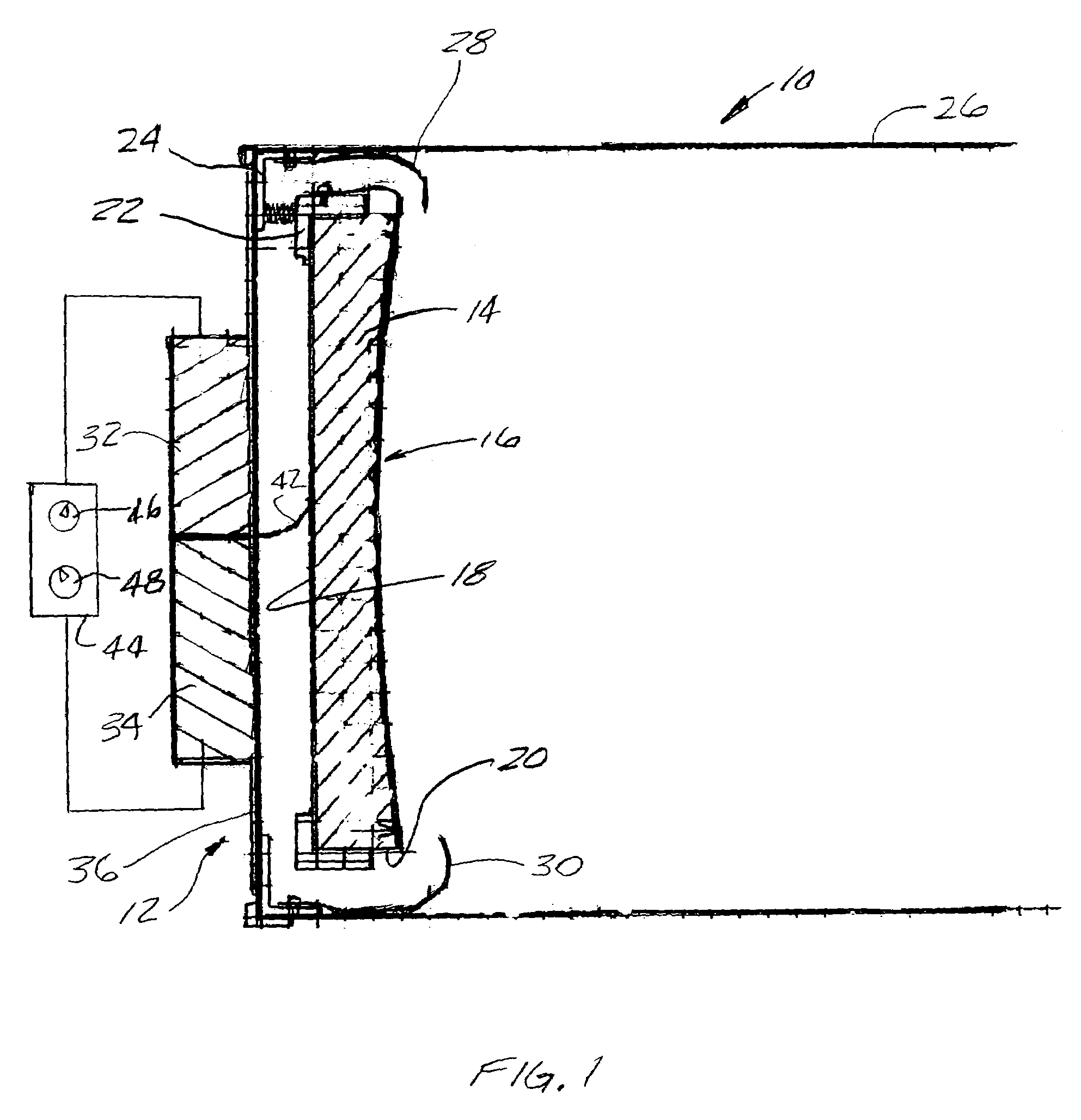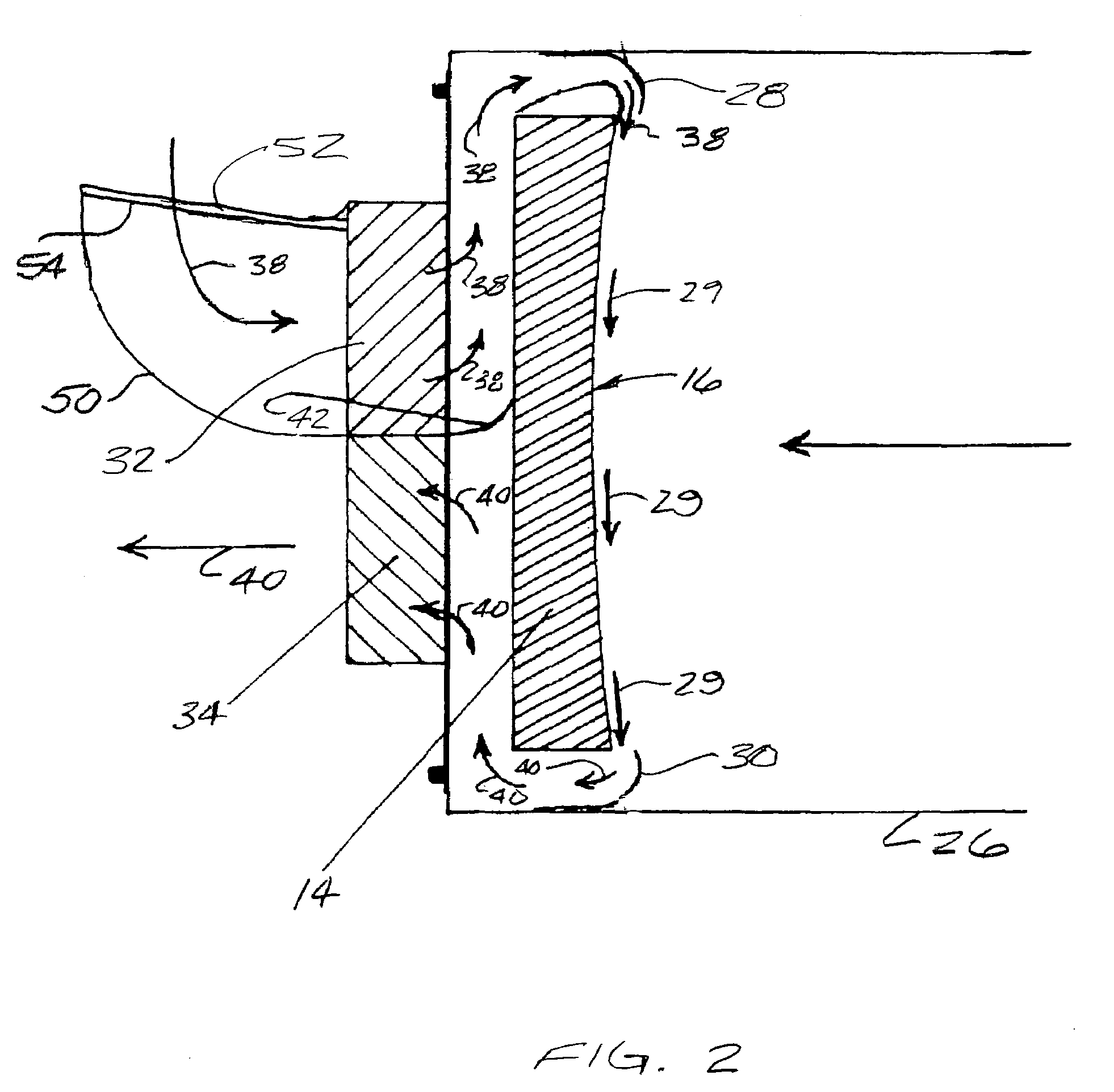Method and apparatus for improving image quality in a reflecting telescope
a technology of reflecting telescope and image quality, which is applied in the field of telescopes, can solve the problems of reducing the image clarity of the edge of the image, affecting the image quality of the image, so as to achieve the effect of effectively and efficiently sweeping away the thermal gradient boundary layer, enhancing the image clarity, and reducing the current of the tub
- Summary
- Abstract
- Description
- Claims
- Application Information
AI Technical Summary
Benefits of technology
Problems solved by technology
Method used
Image
Examples
Embodiment Construction
[0028]FIGS. 1-3 show a first exemplary embodiment of the invention, in the form of a reflector telescope 10, including an apparatus 12 for improving image quality in the reflector telescope 10.
[0029]As best seen in FIG. 1, the exemplary embodiment of the reflector telescope 10 includes a mirror 14 having a front concave reflecting surface 16, a backside 18, and a periphery 20. The mirror 14 is mounted in a conventional adjustable cell arrangement 22, which is in turn adjustably attached to a bottom end 24 of a tube 26 of the telescope 0O.
[0030]The apparatus 12 for improving image quality, in the exemplary embodiment, includes a plurality of supply nozzles 28 disposed about the periphery 20 of the mirror 14, for directing a flow of air from the backside 18 of the mirror 14 across the concave reflecting surface 16 of the mirror 14, in the manner illustrated by arrows 38 and 29 in FIG. 2.
[0031]The apparatus 12 for improving image quality, in the exemplary embodiment of the telescope 10...
PUM
 Login to View More
Login to View More Abstract
Description
Claims
Application Information
 Login to View More
Login to View More - R&D
- Intellectual Property
- Life Sciences
- Materials
- Tech Scout
- Unparalleled Data Quality
- Higher Quality Content
- 60% Fewer Hallucinations
Browse by: Latest US Patents, China's latest patents, Technical Efficacy Thesaurus, Application Domain, Technology Topic, Popular Technical Reports.
© 2025 PatSnap. All rights reserved.Legal|Privacy policy|Modern Slavery Act Transparency Statement|Sitemap|About US| Contact US: help@patsnap.com



